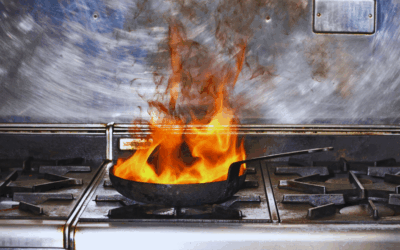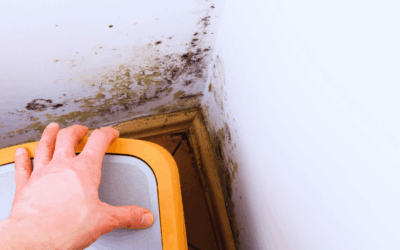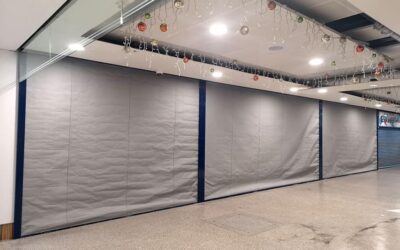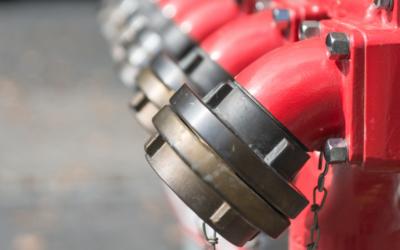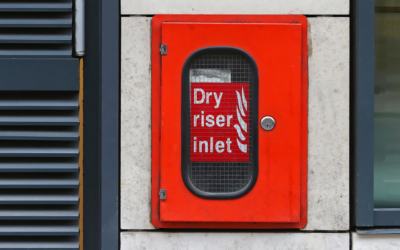Choosing The Type of Fire Extinguisher You Need
We’ve got all the information you need to make the right decision. Let’s start with a little bit about your environment and what might be legally required.
If your premises are used for non-domestic activities, you may be legally required to install and maintain at least one fire extinguisher. This can include home-based businesses as well as the traditional workplace.
 What type of fire extinguisher do you need?
What type of fire extinguisher do you need?
You must choose the correct type of fire extinguisher for the fire you are most likely to experience. If you’re unsure of the specific fire risks within your building or premises, you will need to refer to your most recent fire risk assessment. If you don’t have a current, up-to-date fire risk assessment, you will need to get one to ensure you are compliant with The Regulatory Reform (Fire Safety) Order 2005.
Last year, there were just under 160,000 fires attended by the fire and rescue service according to the Home Office, resulting in hundreds of casualties and more than £100 million in property damage. Being prepared will lower your risk.
In this guide, we aim to give you an overview of the different types of fire extinguishers available, their uses, and how to identify them in an emergency. Let our years of experience help you keep your property, people, assets, and organisation protected with the right type of fire extinguisher.
There are several different types of fire extinguishers, each one designed to tackle one or more types of fire. Using the wrong kind can be completely ineffective, and even dangerous, so it’s important to understand which extinguisher to use and when.
Are Foam Fire Extinguishers and PFAS Banned?
In short, no. Back in 2014, concerns were raised regarding the additives (PFOA/ PFOS) which were used in foam extinguishers. This resulted in a ban on PFOS in the production of foam fire extinguishers more than ten years ago, with a ban on the use of PFOA coming into force 4th July 2025.
The current AFFF foam fire extinguishers widely manufactured and used are produced using fluorotelomer chemistry (containing PFAS), which is not banned. For the past 10 years, OHEAP has only used fluorotelomer chemistry in their extinguishant foam, whether in new foam units or refills.
What is going to change with PFAS and Foam Fire Extinguishers?
 There is further change on the horizon, with legislation planned which will result in foam extinguishers that use PFAS, being banned. This is expected to be ratified in the coming 12-18 months with a ban, and removal of extinguishers, likely to be introduced circa 2030-31 – but these dates are currently UNCONFIRMED.
There is further change on the horizon, with legislation planned which will result in foam extinguishers that use PFAS, being banned. This is expected to be ratified in the coming 12-18 months with a ban, and removal of extinguishers, likely to be introduced circa 2030-31 – but these dates are currently UNCONFIRMED.
As a result, OHEAP has taken an early decision to revert back to a water-based fire extinguisher as a sustainable, environmentally friendly, replacement for foam units.
Technology having advanced means that our 3ltr HYDREX ECO, carries the same classified fire rating (A rating) as our previous foams.
Types of Fire
What classification of fire extinguishers do I need?
To select the correct fire extinguisher for your premises you first need to identify from which class of fire you are at most risk. Fires are differentiated into Classes A, B, C, D, Electrical, and F.

Class A fires are extremely common and involve solid combustible material. This includes wood, paper and textiles, and occurs in both homes and workplaces. There is paper, wood and textiles in almost everything we use. Consider furniture, day-to-day waste, doors, stationery, and carpets, the list of Class A materials is almost endless. This means you are more than likely to need a fire extinguisher that has an A Class fire rating. Class A fires are combated effectively and cheaply by the use of either water or foam fire extinguishers.

Class B fires are outbreaks involving flammable liquids. These include fuels such as petrol and diesel, but also paints, oils and alcohol. Class B fire risks are commonly found in workshops, garages and repair premises where oils, paints and highly flammable liquids are used frequently. However, a Class B fire could be a risk in more unusual places like boats or caravan parks where fuel is kept in containers on site somewhere.
For Class B fires, a foam fire extinguisher is recommended but, any extinguisher with a Class B fire rating may be suitable.

Class C fires are caused by flammable or combustible gases. These gases include methane, propane, or natural gas. These fire risks are commonly found in kitchens, boatyards, caravan parks, garages, petrol stations and filling stations, body shops, and workshops.
If you think you have a Class C fire risk, you should refer to your Fire Risk Assessment as to which type of extinguisher is most suitable for your specific circumstances. Your Fire Risk Assessment will also advise that the appropriate training is provided for the extinguisher recommended to ensure safe use.

Class D fires are mostly encountered in industrial settings and they refer specifically to fires resulting from flammable metals like magnesium. Typical Class D risk environments include foundries, chemical plants, specialist workshops and manufacturing sites where metal is processed.
Class D fires are put out by specialist dry powder extinguishers that can be identified by a purple band on the extinguisher and a lance with a cup at the end. Do not get these Class D powder extinguishers confused with standard dry powder fire extinguishers which are far more common and can be identified by a blue band at the top and no lance.

The Electrical fires are fires involving electrical equipment or appliances. These can occur at home, in the office, or anywhere that electrical equipment is in use. This is a very common fire risk, so it is typical to see a fire extinguisher that has an Electrical Class rating such as a CO2 fire extinguisher. Due to the risk of electric shock and further equipment damage, water extinguishers are not recommended for electrical fires.
The electrical fire class does not include Lithium-ion battery fires which are a separate hazard and require a different type of extinguisher.
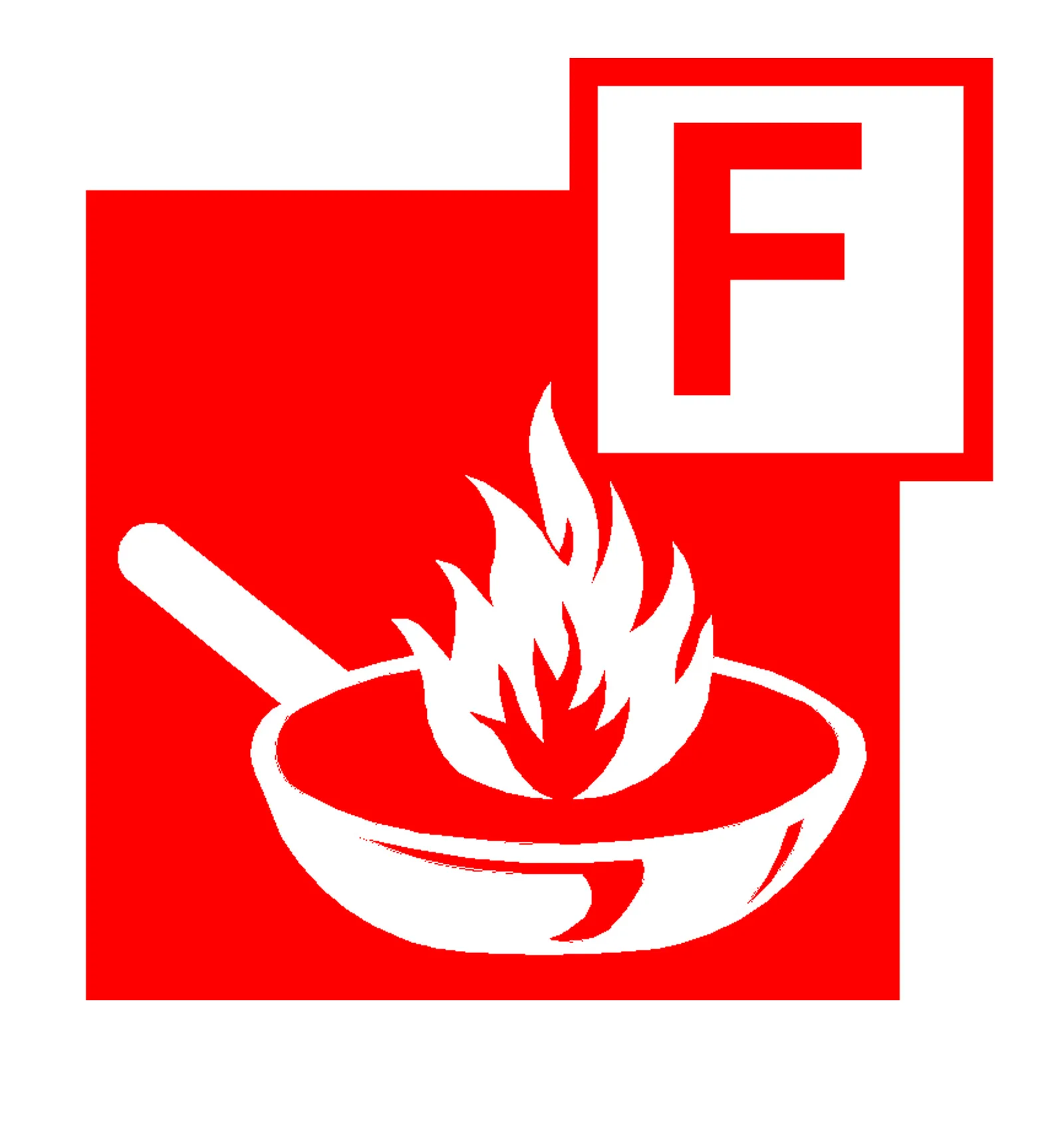
Class F fires typically occur in professional kitchens or other spaces where oils are being heated to high temperatures, like in a deep-fat fryer. This can include food trucks, mobile kitchens, school canteens, event locations, and anywhere where there is hot oil.
Due to the exceptionally high temperatures involved in these fires, a wet chemical extinguisher is recommended. There are several wet chemical extinguishers on the market that are suitable for Class A, B and F fires, making them great all-rounders in the home, or in a workplace with on-site food preparation facilities.
Fire Extinguisher Types
What the Fire Extinguisher Looks Like |
Extinguisher Type |
Colour Code |
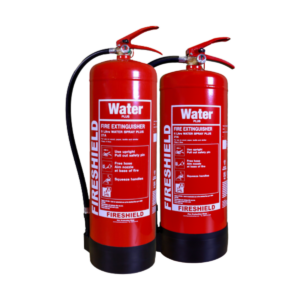 |
Water | Red |
| Standard water extinguishers are commonly found in most buildings and are designed to deal with common Class A fires – wood, paper, cardboard, fabrics etc. They should NEVER be used on an electrical fire as the water conducts electricity and can pose a further safety hazard. Water extinguishers are the most commonly recommended extinguishers for hotels, public places, and residential areas. All water extinguishers are totally red. | ||
 |
Water-Based ECO | Red |
| A water fire extinguisher is the most efficient apparatus for fighting Class A fires (those involving combustible solids like wood or paper). The HYDREX ECO 3ltr Water ECO Extinguisher combines a lightweight and compact design with a performance of 13A thanks to its PFAS-free wetting agent. Whilst PFAS-containing foam fire extinguishers aren’t currently banned, OHEAP Fire & Security are ready for the future of fire safety with this outstanding Hydrex ECO unit – ideal for your class A rating fire cover to accompany your CO2 extinguisher. | ||
 |
Foam | Cream |
| Foam extinguishers are suitable for use on both Class A and B fires, which makes them a good option for many environments. The foam acts as a rapid coolant and prevents oxygen from reaching the fire. Foam extinguishers have a cream panel. Foam extinguishers work by smothering the fire and cooling it via the water content, which helps to prevent it from reigniting. |
||
 |
CO2 | Black |
| CO2 fire extinguishers are easily recognisable by their slimline shape and work by displacing the oxygen in the air to suffocate the fire. They are the go-to choice for use on electrical fires as they won’t harm the electrical equipment and they leave no residue behind. CO2 Fire Extinguishers can be identified by a black coloured panel on the body of the extinguisher. |
||
 |
Dry Powder | Blue |
| Powder extinguishers come in many varieties. ABC powders can be used on Class A, B and C fires. In 2012, British Standards were changed to state that powder extinguishers should not be used inside unless specified otherwise by a health and safety assessment. If you have powder fire extinguishers inside your premises and are in need of replacing them in order to comply, our team will be happy to help you pick the most appropriate replacement. For large workshops, forecourts, and other well-ventilated areas, powder extinguishers are still an excellent choice. |
||
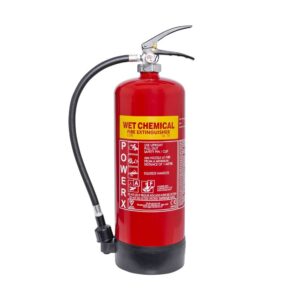 |
Wet Chemical | Yellow |
|
Wet Chemical extinguishers are used to put out Class F fires, which most commonly occur in commercial kitchens due to the presence of hot cooking oils. If your premises contain any form of deep fat fryer or chip pan, your insurance company will likely require you to install a wet chemical extinguisher. Whilst they are specified for Class F fires, some brands of wet chemical extinguishers, like the Gloria and the Titan Pro, are also effective on Class A and B fires. Always check your extinguisher prior to use to confirm. Wet chemical extinguishers have a yellow panel. |
||
 |
Powder | Purple |
| Specialist dry powder extinguishers are formulated to deal with Class D fires, caused by flammable metals. Powder extinguishers have a purple panel. | ||
Types of Fire Extinguishers And Their Uses
We have created a handy guide to help you work out which fire extinguisher you need for each of the fire risks you may have in your building or premises.
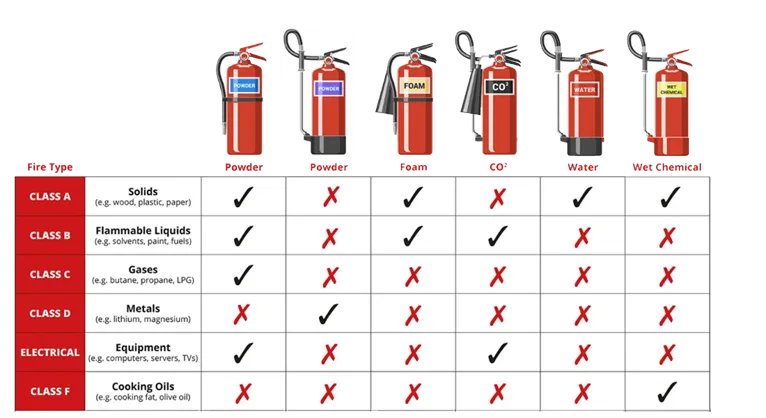
Download your Guide To Fire Extinguishers
If you have found this article useful, we have created a convenient and downloadable PDF. This means it is easier than ever to have your complete guide to fire extinguishers to hand, whenever you need it.
You can save this guide somewhere central or share it with your colleagues to aid the fire safety knowledge across your organisation.
Simply click the button below and your fire extinguisher guide will open for you to download and save.

